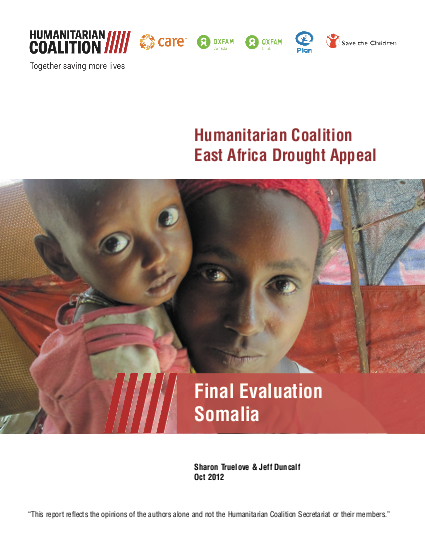
The reviewed projects undoubtedly contributed to saving lives and improving quality of life. Both the small livestock aspects of the Oxfam project and the animal health aspects of the Save the Children project will assist recovery through asset building and livelihoods enhancement. Agencies had designed their Cash Transfer Programmes (CTP) as the food security element of wider, more integrated responses to affected communities1 . As such, the overall needs of the beneficiaries were mostly addressed, allowing the cash elements to be used for the basic food and non-food needs for which they were intended. The low level of the cash grants, set to match the cost of a minimum food basket for an average family of five, restricted the ability of the CTPs to fully meet household (HH) needs. Save the Children’s CIDA2 funded, integrated emergency nutrition, health, water, sanitation and hygiene promotion (WASH) and shelter approach in Mogadishu was a highly successful project. Education and a cash-based program aimed at food security would also have highly benefitted the targeted community. All aspects of the Save the Children, Oxfam, and CIDA-funded projects showed the hallmarks of extremely well planned, partner implemented responses. All CTP technical design steps appear to have followed best practice guidelines and satisfied SPHERE standards. The trader and ‘Hawala’(money transfer company) payment methods adopted were a particular success and were especially well suited to context and beneficiary needs. Indeed the cash projects could be said to be exemplary in almost all aspects3 , including gender, which is a particular achievement given the challenging context, the new programming area of Puntland for Save the Children, and the relative lack of experience of the agencies and their partners in Somalia with cash programming. The Save the Children and Oxfam CTPs were both deemed effective in having gone at least some way to meeting the food security needs of the vulnerable households targeted, the majority of whom were female headed households. The CIDA and HC funding was the initial ‘seed’ that allowed further and ongoing project developments4 that have gone on to respond to the immediate and recovery needs of beneficiaries.